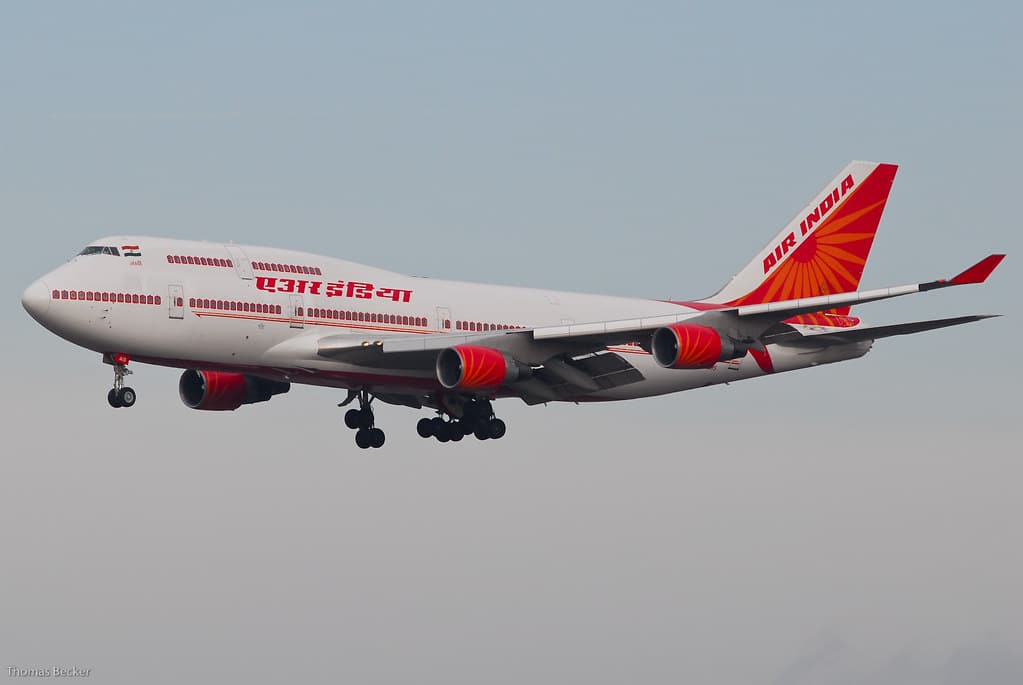Aerospace
Air India’s Maharaja’retires’ his ‘queens of the skies’ after 51 years.

The legendary Boeing 747 will be retired from the Air India fleet. It is one of Boeing’s first largest aeroplanes. From April 1971 to April 2022, Air India flew Boeing 747s for more than 51 years. Three of the four 747s were operating. The last time it was seen was during the covid for evacuating passengers from Wuhan, China.
It had 12 first-class seats, 26 business-class seats, and 385 economy-class seats were available on Air India. It has a maximum take-off weight of 377.8 tonnes and was powered by four Pratt & Whitney engines.
Boeing 747s are currently operated by Lufthansa and Korean Air. The e-registration of these planes is a sad day in aviation. This aircraft was the largest, fastest, and heaviest ever flown by an Indian carrier. None of the pilots who have flown a Boeing 747 have indicated it is a bad plane. The title of “Queen of the Skies” has stuck with her. Air India had a fleet of roughly 20 Boeing 747s, some of which were leased.
According to the latest reports, Air India’s legendary Boeing 747s may have finally reached the end of their service after more than half a century of flying the tricolour across foreign skies. It was also known for the Maharaja Brand. The airline’s website was recently updated by the Tata Group, and the jumbo planes are no longer listed as part of the fleet. Because the majority of airlines revamp fleets by the years. The Maharaja’s final four queens of the skies were deregistered by the Directorate General of Civil Aviation (DGCA) in April.
[the_ad id=”11227″]
As the aircraft fleet ages, it becomes more difficult for airlines to keep them functioning. Only when 80 percent of the seats on a jumbo aircraft are filled can it be profitable, albeit given their age, scarcity of spares, cabin quality, and, most crucially, the investment necessary, it remains to be seen if that happens.
In 1971, the airline received its first jumbo jet, the Emperor Ashoka. AI, under the leadership of JRD Tata, had set new standards for in-flight luxury with the 747s. For this aircraft, it has created a special “Palace in the Sky” livery. When JRD himself introduced the attractively adorned staircase to the top deck, jharokha flight panels, dewans, and bar onboard these gorgeous machines in the 1970s, they were much ahead of their time.
The president, vice president, and prime minister were all flown aboard B747s on medium to long-haul overseas travels. They couldn’t go directly to the Americas, so they had to stop in Europe, especially Frankfurt. Then India received two state-of-the-art Boeing 777s, which, unlike the jumbos that previously served both VVIP and normal flights, will be dedicated to dignitaries and can fly nonstop to and from practically any location on the earth. When the VVIP duty ended, the four-engine double deckers were no longer in demand, especially as fuel prices began to climb.
How has Boeing’s B787 dreamliner turned into a nightmare?
These planes are listed as part of AI’s fleet on the newly updated website: single aisle Airbus A320 family (319, 320, and 321) and wide body B777 and B787s. AI could be the only commercial airline in India to fly four-engine aircraft.
According to recent reports, Tata Group is considering merging with Vistara and plans to deploy Boeing Triple 7 and 7 8 7 aircraft for long-haul flights.
Emirates To Take Final Airbus A380 Delivery In November 2021
However, given that this aircraft has carried India’s aviation history since 1971, saying goodbye is difficult for any aviation lover.
Have you ever flown these planes? Tell us about your favourite moment with Air India in the comments section.
End of Queen of the Skies production, Boeing 747
Boeing 747 jet clocked up just 42 hours in the sky is scrapped

Aerospace
When Ratan Tata was denied entry to the airfield at the Aero India show, he waited

During our visit to Aero India 2019, we had the unexpected opportunity to see Ratan Tata at the event, which was a thrilling moment for us. However, there was a surprising hiccup when the security staff didn’t allow him to enter due to a lack of a security pass.
Despite this, he remained calm and patiently waited for about 20 minutes until a member of the Tata team brought him the required pass, after which he calmly proceeded inside. It was a humbling sight, showcasing his composed demeanor even in such situations.
Ratan Tata ji is not only a renowned industrialist but also a trained pilot, holding a pilot’s license. In 2007, he became the first Indian civilian to fly the F-16 Falcon during the Aero India show in Bangalore—a proud moment for the nation.
His passion for aviation extended beyond flying, as he played a key role in shaping India’s aerospace industry. Under his leadership, Tata ventured into manufacturing and maintaining aerospace components while upholding its legacy of quality. Notably, Tata’s collaboration with Airbus to develop and manufacture the C295 aircraft is a testament to its growing influence in the sector.
-

 Aviation2 months ago
Aviation2 months agoMicrosoft Flight Simulator Raises $3 Million to Bring Back the An-225 Mriya
-

 Airlines2 months ago
Airlines2 months agoQantas Engineers Stage Walkout Over Cost of Living Concerns
-

 Airlines2 months ago
Airlines2 months agoQatar Citizens Can Travel to the United States Without a Visa
-

 Aviation2 months ago
Aviation2 months agoQatar Airways bans these new Electronic Devices on plane
-

 Airlines2 months ago
Airlines2 months agoJapan Airlines Rolls Out Free Domestic Flights to International Passengers
-

 Defence2 months ago
Defence2 months agoWhich Country Has the Largest Fleet of Fighter Aircraft?
-

 Airport2 months ago
Airport2 months agoWestern Sydney Airport Welcomes Its First Plane After 6 Years of construction
-

 Aviation2 months ago
Aviation2 months agoDid you know ? Once Boeing 747 carried 1088 passenger in 1991








